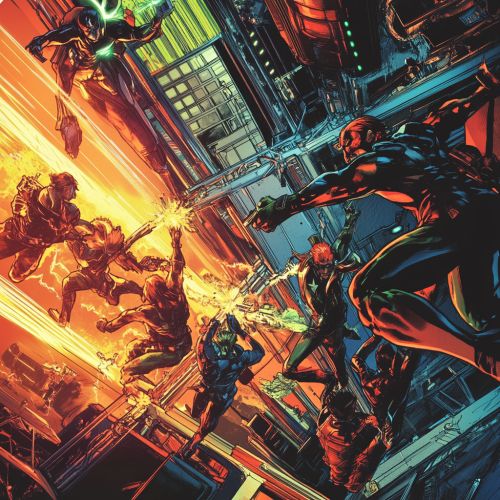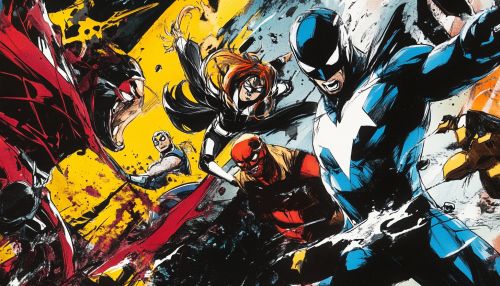William Vance: Difference between revisions
(Created page with "== Early Life and Education == William Vance, born as William Van Cutsem, was a prominent figure in the realm of comic book artistry, renowned for his intricate and dynamic illustrations. Born on September 8, 1935, in Anderlecht, Belgium, Vance's early life was marked by a profound interest in visual arts. His formative years were spent in the culturally rich environment of post-war Belgium, which significantly influenced his artistic style. Vance pursued formal edu...") |
No edit summary |
||
| Line 17: | Line 17: | ||
In addition to "XIII," Vance worked on several other successful series, including "Bob Morane," "Bruno Brazil," and "Bruce J. Hawker." Each of these series demonstrated Vance's versatility as an artist, as he adeptly navigated different genres ranging from espionage to historical adventure. His collaboration with writer [[Greg (comics)|Greg]] on "Bruno Brazil" is particularly noteworthy for its innovative use of color and composition, which set a new standard for visual storytelling in comics. | In addition to "XIII," Vance worked on several other successful series, including "Bob Morane," "Bruno Brazil," and "Bruce J. Hawker." Each of these series demonstrated Vance's versatility as an artist, as he adeptly navigated different genres ranging from espionage to historical adventure. His collaboration with writer [[Greg (comics)|Greg]] on "Bruno Brazil" is particularly noteworthy for its innovative use of color and composition, which set a new standard for visual storytelling in comics. | ||
[[Image:Detail-98457.jpg|thumb|center|Detailed illustration of a comic book scene with dynamic characters and vibrant colors.|class=only_on_mobile]] | |||
[[Image:Detail-98458.jpg|thumb|center|Detailed illustration of a comic book scene with dynamic characters and vibrant colors.|class=only_on_desktop]] | |||
== Artistic Style and Techniques == | == Artistic Style and Techniques == | ||
Latest revision as of 15:18, 12 October 2024
Early Life and Education
William Vance, born as William Van Cutsem, was a prominent figure in the realm of comic book artistry, renowned for his intricate and dynamic illustrations. Born on September 8, 1935, in Anderlecht, Belgium, Vance's early life was marked by a profound interest in visual arts. His formative years were spent in the culturally rich environment of post-war Belgium, which significantly influenced his artistic style. Vance pursued formal education at the Académie Royale des Beaux-Arts in Brussels, where he honed his skills in drawing and painting, laying the foundation for his future career in comics.
Career Beginnings
Vance's professional journey began in the early 1960s when he started working for the magazine "Tintin," a publication that played a crucial role in the development of the Franco-Belgian comics tradition. His early works included illustrations for short stories and covers, which quickly garnered attention for their meticulous detail and vibrant composition. Vance's breakthrough came with the series "Howard Flynn," a naval adventure comic that showcased his ability to blend historical accuracy with engaging storytelling.
Major Works and Contributions
XIII
One of Vance's most notable contributions to the comic book industry is the series "XIII", which he co-created with writer Jean Van Hamme. Debuting in 1984, "XIII" is a political thriller that follows the amnesiac protagonist as he unravels a complex conspiracy. Vance's artwork in "XIII" is characterized by its cinematic quality, with dynamic panel layouts and realistic character designs that enhance the narrative's suspenseful atmosphere. The series achieved international acclaim and was adapted into various media, including a television series and a video game.
Other Notable Series
In addition to "XIII," Vance worked on several other successful series, including "Bob Morane," "Bruno Brazil," and "Bruce J. Hawker." Each of these series demonstrated Vance's versatility as an artist, as he adeptly navigated different genres ranging from espionage to historical adventure. His collaboration with writer Greg on "Bruno Brazil" is particularly noteworthy for its innovative use of color and composition, which set a new standard for visual storytelling in comics.


Artistic Style and Techniques
Vance's artistic style is distinguished by its precision and attention to detail. He employed a meticulous inking technique that emphasized line work and texture, creating a sense of depth and realism in his illustrations. Vance was also known for his use of color, often opting for a muted palette that complemented the serious tone of his narratives. His ability to convey emotion and movement through facial expressions and body language was a hallmark of his work, making his characters both relatable and compelling.
Legacy and Influence
William Vance's impact on the comic book industry is profound, with his works influencing a generation of artists and writers. His contributions to the Franco-Belgian comics tradition helped elevate the medium to new artistic heights, and his storytelling techniques continue to be studied and emulated by aspiring comic book creators. Vance's legacy is preserved through the continued popularity of his series, which remain in print and continue to attract new readers.
Personal Life and Death
Vance was known for his private nature, often shying away from the public eye. He spent much of his later life in Spain, where he continued to work on his art until his retirement. Vance passed away on May 14, 2018, leaving behind a rich body of work that continues to inspire and captivate audiences worldwide.
